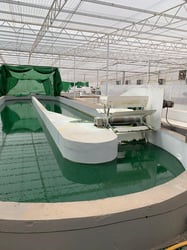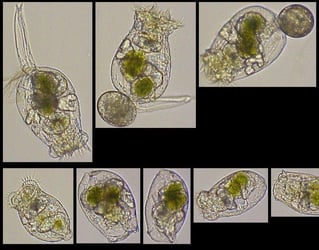Coral Jane Fung Shek was a graduate student at Johns Hopkins University when she explored the efficacy and accuracy of dynamic imaging particle analysis, a technique also known as imaging flow microscopy. Her research focused on conducting quantitative morphological analysis of algae, a critical area of study given the ecological and environmental significance of these organisms. She examined the accuracy of this advanced method not only for its color sensitivity, which is crucial for distinguishing between different algal species but also for its capability in precise algal cell counting, an essential aspect for understanding algal population dynamics and growth patterns, particularly relevant to microalgae cultivation operations.
In her thesis, "Dynamic Imaging Particle Analysis For Quantitative Morphological Analysis and Cell Counting" (2015), Fung Shek investigated and quantified morphological differences in algae exposed to different growth conditions. She also tested the FlowCam's color sensitivity and compared its monoculture and polyculture cell counting capabilities with those of the hemocytometer and optical density readings using the UV/Vis Spectrophotometer.
Pictured above: Chlorella vulgaris captured by the FlowCam at 20X
Fung Shek used FlowCam and its associated analytical software VisualSpreadsheet to measure and analyze the geodesic length, area, circularity, and equivalent spherical diameter of algal cells to enable comparison of cell size, shape, and growth rate of over 25 strains of algae subjected to various growth conditions.
Average Red, Green, and Blue (RGB) values of three different algae cultures were used to test FlowCam's color channel sensitivity. Fung Shek found that RGB values measured by the FlowCam effectively indicate the color difference between cultures.
FlowCam's cell quantification capability was compared to the hemocytometer and optical density measurements from a UV/Vis Spectrophotometer. The monoculture algal cell quantification results from the FlowCam and hemocytometry showed a high correlation value with minor variability. The optical density readings from the UV/Vis Spectrophotometer and FlowCam also showed a correlation; however, the results were more variable, likely due to the spectrophotometer's inherent variability.
FlowCam quantified both species, Synechoccus elongatus and Cryptococcus curvatus, within a polyculture. Due to the small size of S. elongatus, the hemocytometer could not detect and count this algae species. FlowCam and hemocytometer quantification results for S. elongatus were significantly similar.
Additionally, Fung Shek determined that using chlorophyll-detecting lasers and analytical filters in VisualSpreadsheet would have aided in differentiating C. sorokiniana cells from bacteria in unsterilized, active wastewater.
Read more about Fung Shek's research→ Access Fung Shek's full thesis here.
Fung Shek received the 2015 Fluid Imaging Technologies, Inc. Student Research Grant.
Learn more about using the FlowCam for conducting quantitative and qualitative morphological algae analyses.
Citations:
Fung Shek, C.J., Dynamic Imaging Particle Analysis for Quantitative Morphological Analysis and Cell Counting [master's thesis]. [Baltimore (MD)]: Johns Hopkins University; 2015. 85 p.








.jpg)


